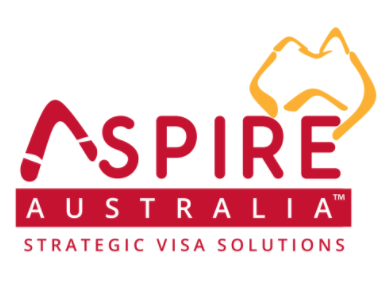As many skilled workers trying to achieve an Australian visa already know, the General Skilled Migration Programme is highly competitive.
What makes it different to other visa programmes is that candidates must be invited to apply for a visa by the Department of Home Affairs, after lodging an Expression of Interest (EOI).
There are only two ways to be invited: achieve the highest points for your occupation in any given invitation round or obtain a state/territory sponsorship.
Understanding which is the best strategy for you, will give you the best chance of success.
Let’s take you through how it works.
Gaining maximum points in the GSM programme
In our most recent blog, we gave you some tips on how to ensure your Expression of Interest accurately reflects your attributes. We also discussed how important it is to prepare evidence to support your claims.
Once your EOI is submitted, you will be considered for visa selection according to a range of factors including:
- occupations being invited in that round by the Government (not all occupations receive invitations each round)
- the number of positions being invited
- the points scored by other EOI candidates.
Those with the highest points will be invited first.
Here’s a handy tip from our Migration SuperHero Sarah: The Department of Home Affairs’ website provides statistics for various elements for the Skill Select programme, including annual quotas for each occupation, details of high demand occupations and scores at which candidates have been invited.
But what if you can avoid the competitive points scrum and be lifted out of the EOI pool – and issued a visa invitation – through a state or territory sponsorship?
Why the Skilled Occupation Lists are important
Occupations for General Skilled Migration appear either on the Medium and Long-term Strategic Skills List (MLTSSL) the Short-term Skilled Occupation List (STSOL) or the Regional Occupations List (ROL).
Occupations on the MLTSSL list allow for independent migration through subclass 189.
Occupations on the STSOL or ROL, however, will require state/territory sponsorship or, for the new 491 visa, state / territory or family sponsorship.
EOI candidates who obtain a state/territory sponsorship, will be immediately invited to apply for the relevant GSM visa (190 for permanent residence, 491 for temporary residence).
But here’s the interesting part – it is not only those on the STSOL who can access state/territory sponsorship.
EOI candidates on the MLTSSL may also use the strategy of obtaining sponsorship to effectively leap over other candidates in the EOI pool and obtain the golden ticket, a visa invitation.
So, what do you need to do, which state should you choose and how do you manage the options that appear in the EOI?
Selecting a state/territory in your Expression of Interest
In the EOI, you have the opportunity to select the options that interest you.
Starting with – what visas you wish to be considered for.
Here’s our advice. Even if you are entitled to apply for the 189, consider adding in the 190 visa (and the 491 if interested).
You will then be asked to select which states or regions you are interested in. You may select ‘All states’ or you may specify one particular state.
Something to keep in mind – most states will only consider sponsoring candidates who have only selected their state/territory.
Therefore, it’s worth starting with the state you prefer and, if a sponsorship is not forthcoming, move gradually through the list of available states.
So which states are available for which occupations?
This is a moveable feast and, especially as the migration programme year progresses and quotas are filled, opportunities may reduce. You can access information about which states are offering sponsorships for which occupations and visas on the Department website.
Here you can see each state at a glance, and whether they are sponsoring your occupation, for which visa (190 / 491) and whether there are any additional criteria.
Different states/territories may require candidates to have certain
- English language levels
- minimum years of work experience
- a job offer
- evidence of living/working/studying in the state or territory.
Check carefully to see if you meet all the criteria.
What if you don’t meet the criteria?
If you do not currently meet the criteria for a state sponsorship, there is often a strategy that can be adopted to work towards obtaining a sponsorship.
If you are onshore:
- Can you move?
- Can you obtain a job offer?
- Can you improve your English score?
Many onshore candidates will move interstate to improve sponsorship opportunities or transfer their studies to a regional area.
If offshore, obtaining a job offer or improving your English may be sufficient to snag a state/territory sponsorship.
Flexibility on where you live
A very important point in your consideration is whether you, and any accompanying family members, are willing to live in the state/territory area that is available.
If you’re granted the 190 visa, you are expected to live and work in a regional area for two years.
If you’re granted the temporary 491 visa, you may be living, working and studying in a regional area for up to five years before transitioning to permanent residence.
So, ensure that you do your due diligence in terms of investigating job opportunities, cost of living, schools, environment and weather before deciding if a particular area is on your list or not.
The home stretch
Having undertaken your research and identified your options – update your EOI, selecting only the state/territory for which you are currently eligible.
Once you have done this in your EOI, you may apply directly to that state/territory for sponsorship (except for NSW and Victoria)
If you are interested in NSW or Victoria, after selecting only the one state, candidates must wait to be invited to make an application for state sponsorship.
Once a state sponsorship is granted, you will immediately receive an invitation to apply for a visa!
And you will be well on your way to bringing your dream of living and working in Australia to reality.
A winning strategy
At Aspire Australia, we believe the strength is in the strategy!
We use our experience and insider knowledge to give you a competitive advantage.
Our guidebook, How to Live and Work Down Under, can help you understand the process. Download it today, to learn about the different visa pathways in the GSM Programme.
If you are ready to move to the next step, and would like a guide along your journey from beginning to end – we invite you to book into an appointment with our Migration SuperHero, Sarah Gillis, and obtain your very own MAP: Migration Action Plan.
We look forward to connecting with you soon!









